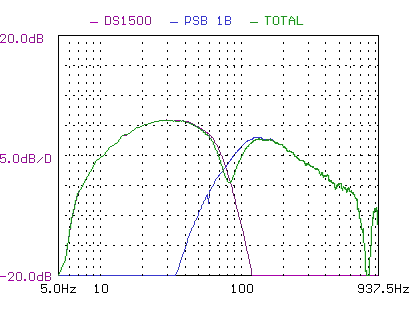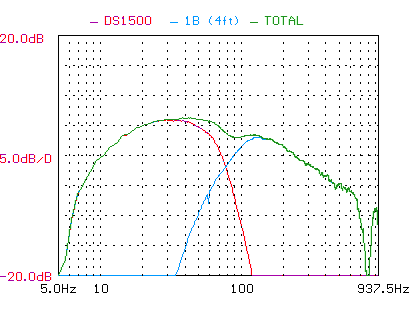Fortunately it's quite simple to time align a subwoofer, but is it necessary? The simple answer is yes, but in reality it's a phase alignment issue. Time alignment usually relates to imaging, but phase alignment tends to refer to frequency response. In short, if phase is misaligned, the subwoofer won't correctly integrate with the mains.
Here is an example:
Here a Rythmik servo sub is crossed to a vented speaker (PSB). You can see a dip at the crossover. This can be improved by plugging the port but many small speakers rely on the port to get reasonable extension. In many cases, plugging the port means the sub would have to cross very high.
The ideal solution is to use digital delay, as shown below. The result is as close to perfect as we need to get. Perfection isn't necessary since the room itself will do a lot more damage.
These images come from an article on subwoofer phase alignment on the Rythmik audio website. I was first introduced to this idea by Brian Ding, the owner of Rythmik audio.
In a nutshell, you can manipulate the distance settings on the receiver. In effect this will mean delaying the other speakers digitally, so the subwoofer can "catch up." Ideally this should be done before attempting to resolve room modes. Otherwise you could think that a phase issue is actually a room mode dip.
The Rythmik article shows how to calculate the necessary distance/delay to add. You can do this with a receiver, or with an active crossover. View article >
Time alignment series
Why you should time align >
Is it really necessary?
Time alignment overview >
A bird's eye view of various ways that are used to time align speakers. Does physical offset really work?
Time alignment with Behringer DCX >
This is about as easy as it gets. You need a mic and a few minutes to run the auto routine.
Digital time alignment >
My preferred method. No need to build bizarre baffles that can introduce their own issues.



No comments:
Post a Comment
All comments are moderated.